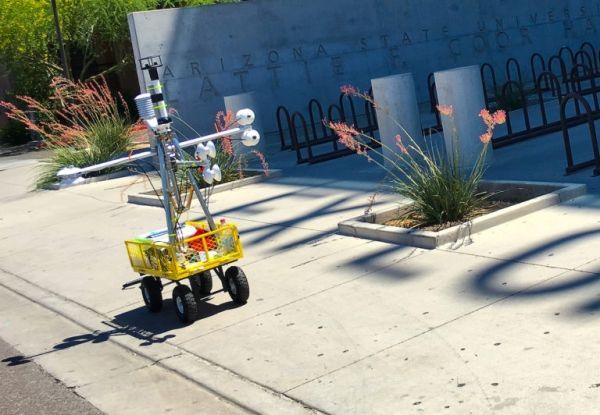Cities are likely to get hotter under global warming.
But by countering the intense radiant heat given off by sidewalks, buildings and other infrastructure, urban landscaping and construction can make pedestrian spaces feel 10 degrees Celsius cooler or more, said a University of Guelph atmospheric scientist and co-author of a pioneering study.
Published recently in Science of the Total Environment, the study provides the first urban micrometeorological measurements of pedestrian “thermal exposure” during extreme heat in a dry climate, said Prof. Scott Krayenhoff, School of Environmental Sciences.
How extreme?
For their one-day study, Krayenhoff and Ariane Middel, a professor at Arizona State University (ASU), picked a record-breaking heat day: June 19, 2016, in Tempe, Arizona, when the thermometer reached a high of 48 C. The highest temperature recorded in Canada was 45 C on July 5, 1937, in southern Saskatchewan.
Continue reading at University of Guelph.
Image via University of Guelph.


